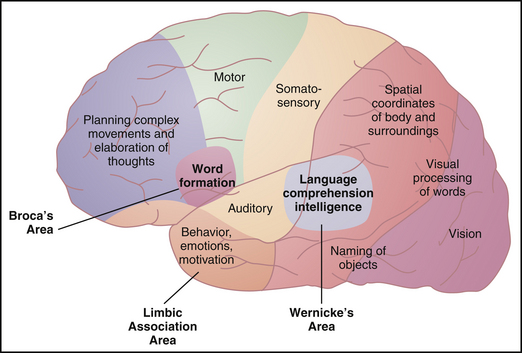47 CASE 47
PATHOPHYSIOLOGY OF KEY SYMPTOMS
Broca’s area is a region of the posterior lateral prefrontal cortex and the premotor area. This region of the brain controls the motor patterns for expressing individual words. It is located adjacent to the prefrontal cortex, auditory cortex, and motor cortex and receives extensive innervation from all three. Broca’s area also interacts with the language comprehension region of the temporal lobe, Wernicke’s area. In contrast to most motor and sensory cortical regions, Broca’s area and Wernicke’s area are not bilaterally represented and are usually only found in the left hemisphere (Fig. 47-1).
< div class='tao-gold-member'>
Only gold members can continue reading. Log In or Register to continue
Stay updated, free articles. Join our Telegram channel

Full access? Get Clinical Tree



